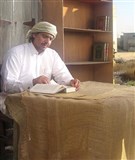It was a strange but mutually beneficial arrangement. I needed to travel north through a number of checkpoints to visit a town that had borne the brunt of the occupation and I needed to get back to Ramallah at a decent hour so as to see friends before I left the next day. They had a service taxi for hire, but little business and few customers. I hired the taxi for a day, and the driver asked if his best friend and his best friend’s son could come along. I said, “The more the merrier.” As we left Ramallah, we passed by the PA’s headquarters, the place where Arafat had been confined for the last three years of his life. They showed me where the prison had been, where the television station was and so on. Much of it was still rubble, even though the Israeli attacks were now years old or more. We left al-Bira and the driver startled me by saying it was good to leave Ramallah. “It belongs to the Tunisians and the Americans who returned to build their villas and play.” He pointed north, offered me a cigarette and said, “Welcome to Palestine.”

This then was to be my “tour” of the occupied territories, and these three, my tour guides. I asked them question after question: What’s that? What’s the name of that village? Where does that dirt road lead to? What kind of trees are those? What kind of grain is that? What’s that building? What’s over there? Why is the asphalt so bad here, why is it better back on the road we were just on? I must have asked hundreds of questions, but my guides did not seem annoyed by them. They got a kick out of my linguistic struggles, I think. For me, it was my first time hearing the dialect of the villages, where, as everyone knows, the letter K disappears to be replaced by a CH sound. Though I came here to tour the landscape of the territories, I was now intrigued their idioms.
I began asking questions whose answers I hoped would contain this peculiar dialect trait. “How many villages are there in the Jenin district?” They might answer , “Chateer, chateer!” After they revealed their low opinion of the factions, I asked, “What do you think of Hamas and Jihad?” I was rewarded with the beautiful, “Chuss ukht Hamas! Chuss ukht Jihad! I’m a Muslim, but I don’t want my religion mixed into politics.” I’d never heard people the say the equivalent of “sister’s chunt” before, and it was oddly entertaining. I made notes on their speech patterns, especially since the sound “CH” does not exist in classical Arabic. Later, I would ask colleagues about the morphological transpositions of their local dialect. Perhaps a Semiticist would be able to tell me where such sounds originated and how they might be traced historically and geographically.
We passed towards Silwad and I began to notice that I didn’t need to keep asking certain questions. For instance, each hilltop in the region was covered with a sprawling development that reminded me of the Whites-only gated communities I’d known growing up in Los Angeles.
I’d point and ask, “What’s that?” And the answer would invariably be the same:
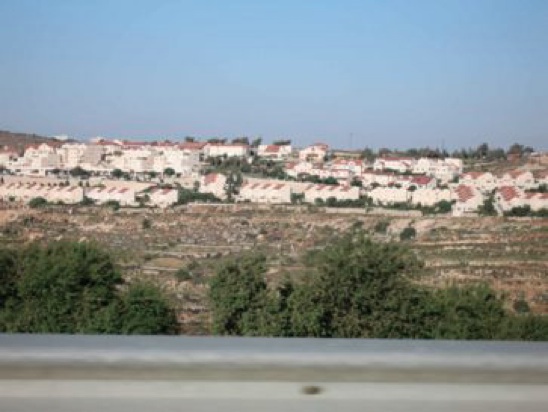
“It’s a settlement. It’s called Atarot.”
“It’s a settlement. It’s called Eli.”
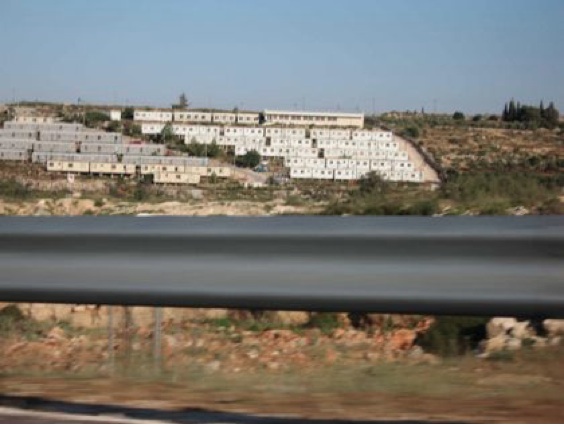
“It’s a settlement. It’s called Kfar Tapu’ah.”
“It’s a settlement. It’s called Imanu’el.”
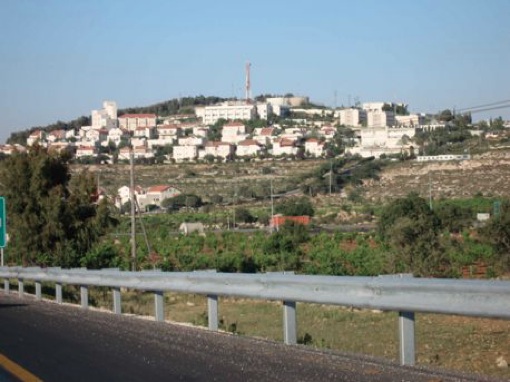
“It’s a settlement. It’s called Givrot Shomron.”
“It’s a settlement. It’s called Ma’ale Shomron.”
And so on. I noticed that, though we were deep in the territories, the roads were often covered with Israeli flags and often with billboards. Orange flags, symbolizing settler protest, were everywhere. Jewish men and women with guns hitchhiked at the major junctions. I took pictures of everything I saw and tried to remember the names my guides told me.
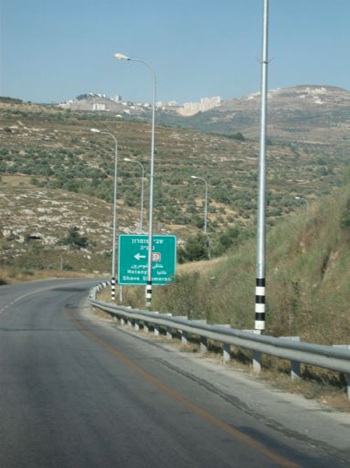
The road signs were written in Hebrew, Latin and Arabic letters. My companions explained that they only refer to the Hebrew names the settlers had bestowed on the places we passed. The Arabic names did not appear, they pointed out, unless they’d been transliterated twice: first into Hebrew, and then back again into Arabic.
For instance, we saw the Palestinian village of “Libban,” and they showed me how the settlement that had been built above it had to have a pure Hebrew name. They used a cognate instead, “Lavon.” Then they showed me the Arabic translation of the road sign that referred to the place, not as “Libban,” but “Lavun.” They emphasized the word’s foreignness, since the Arabic language has no letter “V.”
Soon, we had stopped looking at the landscape as it rushed by and were looking instead for all the words we could find. Each time we found a road sign, we read it out loud, mangling the pronunciation in laughter. They commented, “They took these lands by force, then they take them again by letters. What do they imagine? That we’ll forget our own names too?” They laughed again, “Chuss ukht the settlements!”
![[Image from Elliot Colla`s archive]](https://kms.jadaliyya.com/Images/357x383xo/morphimage.jpg)

